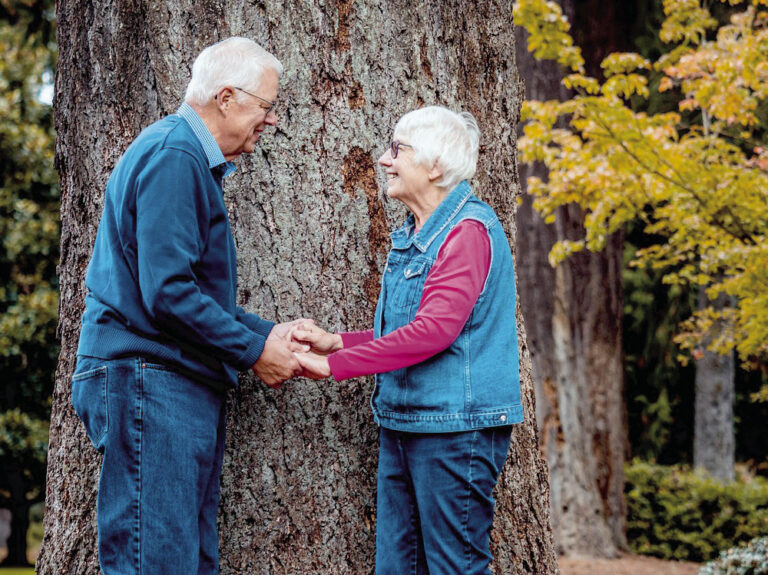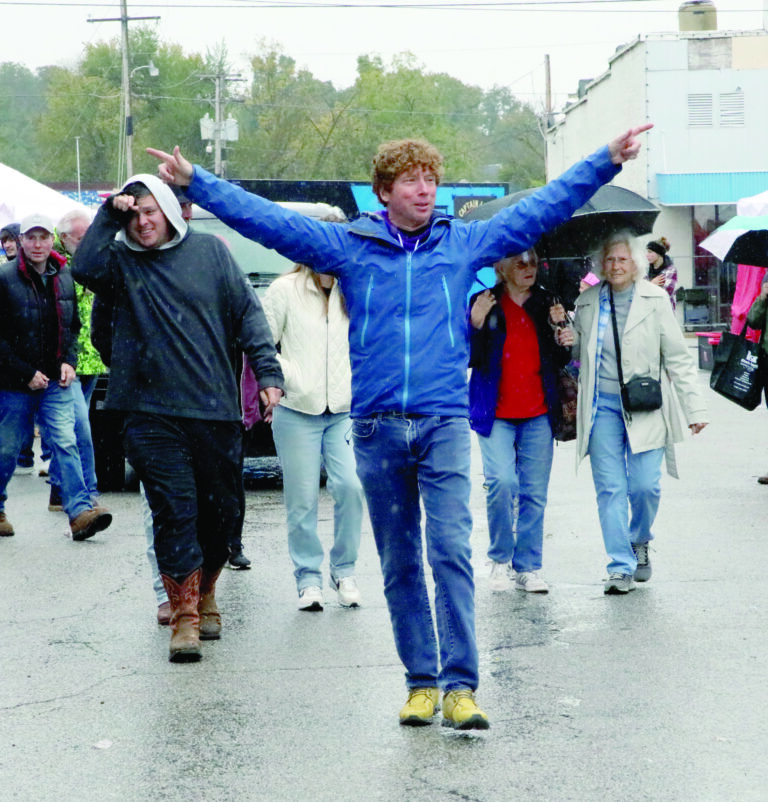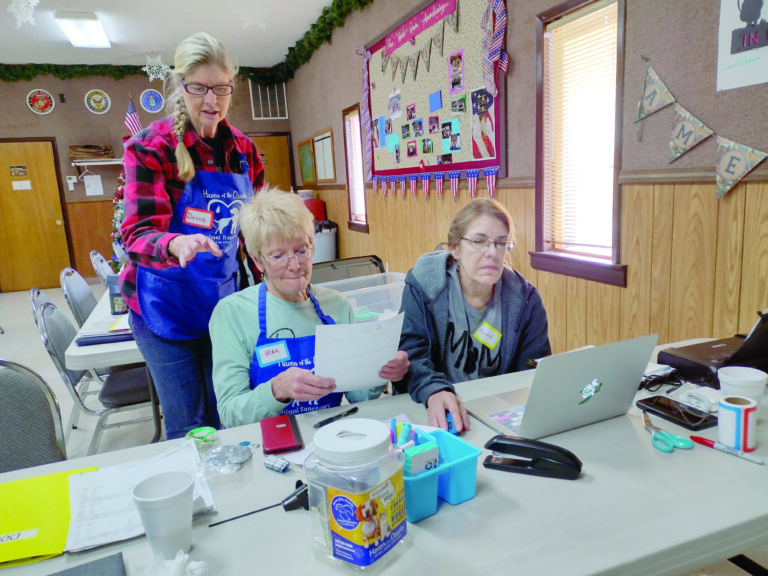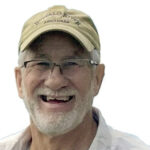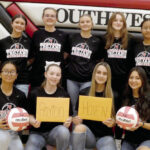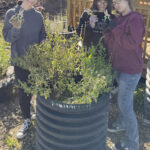SHELL KNOB TAB: A slice of Shell Knob in Jeff City
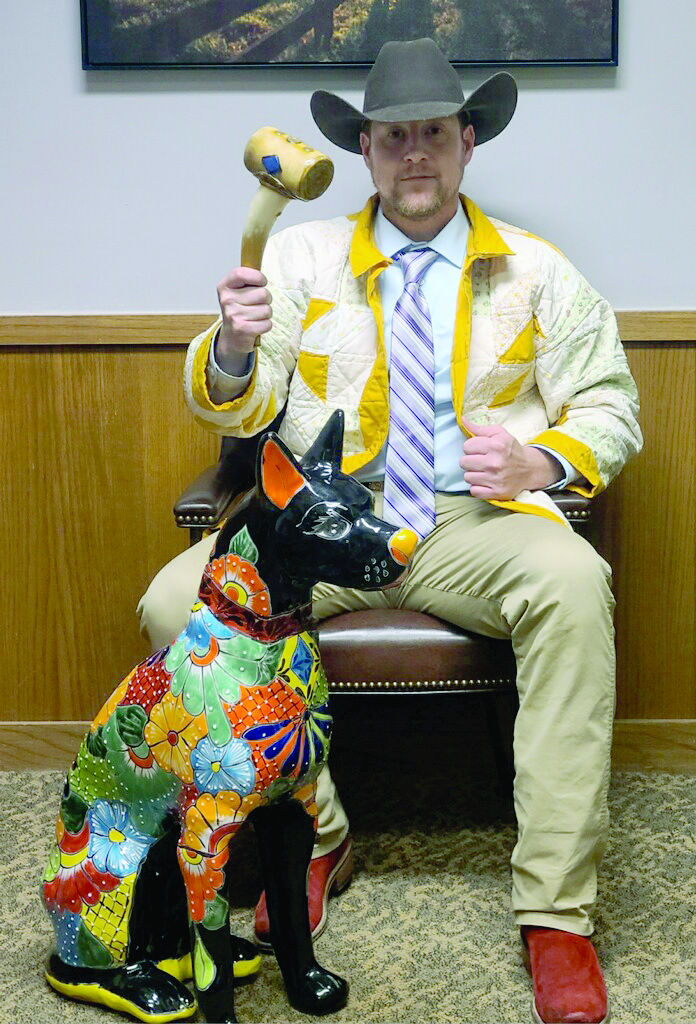
Cupps’ handmade quilted jacket, gavel have ties to history, family
By Sheila Harris sheilaharrisads@gmail.com
Scott Cupps, Missouri’s 158th District House Representative for Barry and McDonald Counties, calls Shell Knob home.
With roots in the area going back for multiple generations, Cupps speaks with authority garnered from oral tradition about who did what, when and where in the history of the lakeside community.
No matter one’s political leanings, after a conversation with Cupps about agriculture or local history, a person will know much more about the topics than they did before they initiated it. One will realize, too, that they have been in the company of a colorful character, if only by telephone.
Cupps said most of the original settlers to Shell Knob, who began arriving in 1835, came by way of the White River, as opposed to settlers who arrived by land in northern parts of Barry County.
Cupps said the Epperlys, on his paternal grandmother Maurine Epperly’s side, are his family’s original Shell Knob connection. The rolls of the Epperly Cemetery, located on the Cupps property in Old Shell Knob, attest to that fact. The first burial in the cemetery was recorded in 1882.
“Matthew Simeon Epperly was the first of my ancestors to settle in Shell Knob around 1879, near the White River,” Cupps said. “When my grandmother married my grandfather, John Cupps, he lived in Newton County. The two moved to Shell Knob to help my great-grandfather Epperly run his general store, not long before my dad (Johnny Cupps) was born.
“People have long kiddingly accused my dad of not being a native of Shell Knob, since he was 2 years old when his parents moved him here.”
Scott and his twin brother, Matt Cupps, though, have legitimate bragging rights to being Shell Knob natives.
When he’s not fulfilling his official obligations in Jefferson City, Cupps and his brother operate a large, family farm in Shell Knob, a vocation they learned at the knees of their father.
“The early settlers to these steep hills overworked the land with their subsistence farming,” Cupps said. “Plowing left the soil at the mercy of the rain, and the rain washed the soil down into the valleys. The farmers could barely survive, let alone make a profit.
“When the government offered a buyback of the land, it was originally intended to restore soil conditions.”
The U.S. Army Corp of Engineers stepped in when Table Rock Dam was constructed on the White River near Branson, beginning in 1954. The flooding of the White River Basin to form Table Rock Lake changed the economic backbone of Shell Knob from farming to tourism, Cupps said.
“Without Table Rock Lake, Shell Knob would be another community like Jenkins,” he said.
The post office in the unincorporated community of Jenkins, some 15 miles north of Shell Knob, closed in 1965, followed by its school in 1993.
The Central Crossing Bridge that crosses the lake in Shell Knob is the second iteration of its kind connecting present day Shell Knob, with its southern neighbor, Viola. Prior to the bridges, ferries were used to shuttle residents from one side of the White River to the other.
“My grandfather and great-grandfather played a part in sinking the first Shell Knob Bridge after the dam was completed and the new bridge was opened [in 1960],” Cupps said. “The old bridge is down in the bottom of the lake at the end of Needle’s Eye Road.”
According to 1959 and 1960 articles in the Cassville Democrat, the new Central Crossing Bridge was opened for traffic before it was scheduled to, because flood waters began inundating the old bridge before they were expected to.
Perhaps nothing speaks more clearly of Cupps’ love for Barry County and his pride in his Shell Knob history than the quilted, yellow-plaid jacket and custom-made gavel he was gifted after his appointment to the position of Chairman of a House Rules Committee in Jefferson City.
“The concept [of the jacket] is modeled after the unique coats that used to be worn by pit-traders at the Chicago Board of Trade to identify the firm they were associated with before the open outcry pit-trading was discontinued,” Cupps said. “Some of those jackets were very distinguishable.
“When I told some grain/commodity trading friends who I’d once worked with that I had been appointed to be a Rules Chairman, they joked around and told me that I needed a unique Rules Chairman Jacket. I replied that I needed a quilted jacket to honor my grandmother [Maurine Epperly Cupps, who died many years ago] and her love for quilting.”
His friends worked some Facebook magic, Cupps said, and tracked down an old quilting friend of his grandmother’s.
“She accepted a commission from my friends to make me my House Rules coat,” Cupps said. “But, she doesn’t want her name to be made public, for fear she’ll be inundated with all kinds of requests.”
Cupps was inordinately pleased with the gift of his jacket.
“It’s cozy and much more comfortable than I expected when they first gave it to me,” Cupps said. “It’s difficult for me to not want to wear it every day, all day.”
Cupps said his custom-made gavel — “Liberado,” or “The Gavel of Freedom” — was created by Barry County Resident Pard Lowe, who, along with his wife Lois, have been friends of the Cupps family for decades.
“When I was elected, Pard (a skilled ‘tinkerer’) asked me if there was anything I’d like for him to make me,” Cupps said. “But, I couldn’t think of anything.”
A few years later, when Cupps was appointed to the position of Chairman of Public Policy, he said he found himself in need of a Chairman’s gavel, and providentially encountered Lowe again. This time, he was prepared.
“I asked Pard if he could make me a gavel,” Cupps said. “So, he constructed one from pieces and parts of old stuff that meant something to his and my family’s relationship. [The gavel] is made from an old steer horn, as a handle, and a piece of full-grain, rolled rawhide, as the head. It’s adorned with some shotgun-shell and rifle-cartridge casings that Lowe said could have been some of the last he had purchased from my grandfather’s general store before it closed down. The gavel also has some brass bushings from an old boat motor, like the ones my great-grandfather and grandfather used to sell through the store.”
Cupps remembers the general store, located in Old Shell Knob, as a sealed time capsule throughout his growing up years.
“It was closed, but the inventory was still intact – some of it dating clear back to the 1930s,” Cupps said. “I loved to scout around in there when I was a kid.”
According to Cupps, although the structure still remains, the contents of the store were auctioned off and otherwise cleared out in the early 2000s, after his grandparents’ deaths.
After receiving the gavel from Lowe, Cupps said he asked one of his former college professors who taught Agriculture Mechanics if his Metallurgy class could forge a sounding block for the gavel. A plow shank from an old plow of his dad’s was subsequently forged into a block with the word “Freedom” hot-stamped onto the front and “Gentleman from Barry” stamped on the back.
While his jacket and gavel are attention-getting, Cupps said he wants them to serve as a reminder to himself and others of the reason he is in Jefferson City.
“I’m here to make sure that government is serving the people, not the other way around,” Cupps said. “Sometimes, if you’re not carrying the [common bucket of] water in Jefferson City, they’ll make it out like you’re unhinged. I willingly accept that label and turn it around.”
Cupps said his jacket and gavel are a reminder that he’ll stand up to outside pressure from lobbyists and other legislators, in order to serve the best interest of his constituents.
His Gavel of Freedom, Cupps said, will remain with Barry County, for the next person who fills his shoes.

